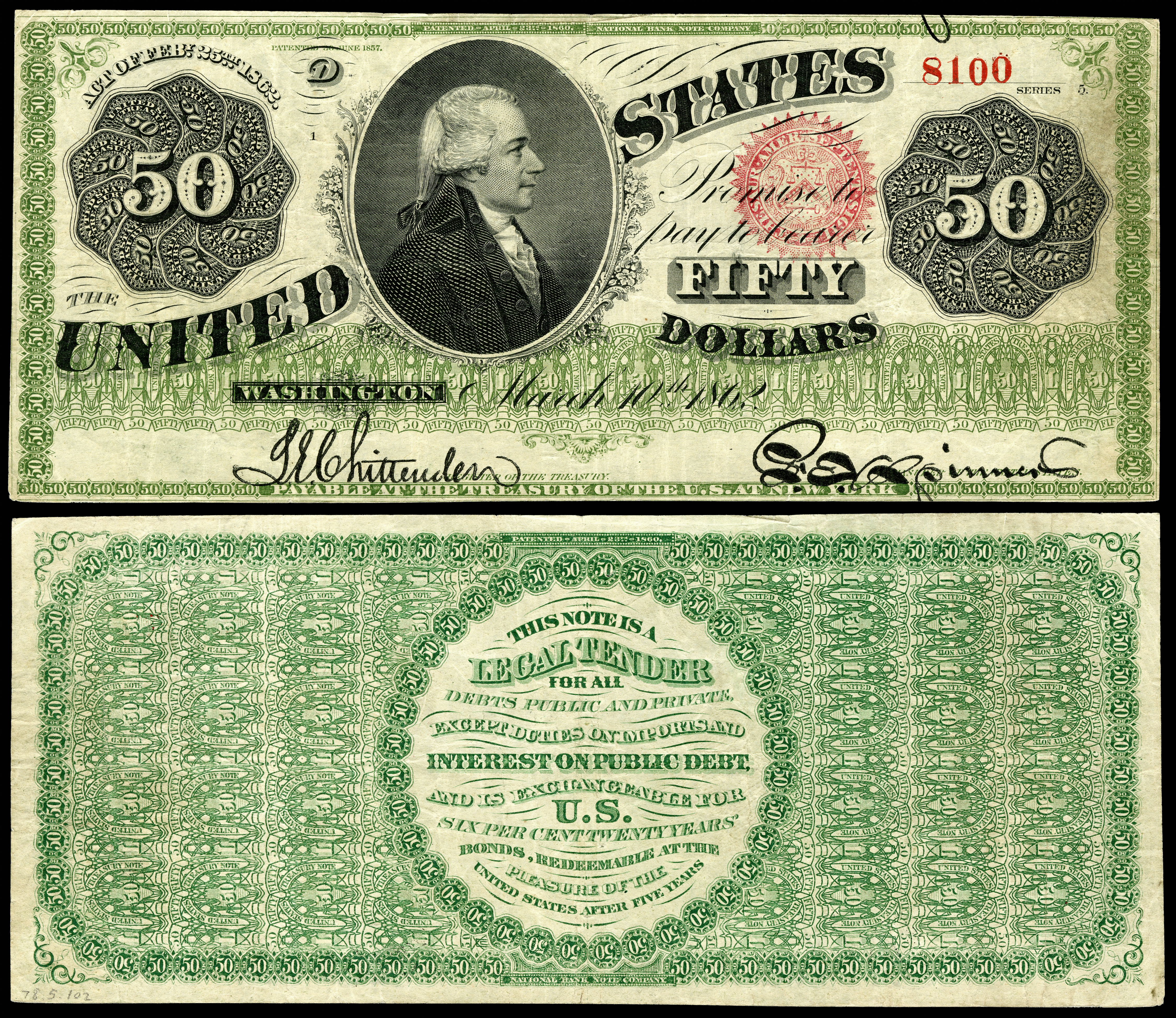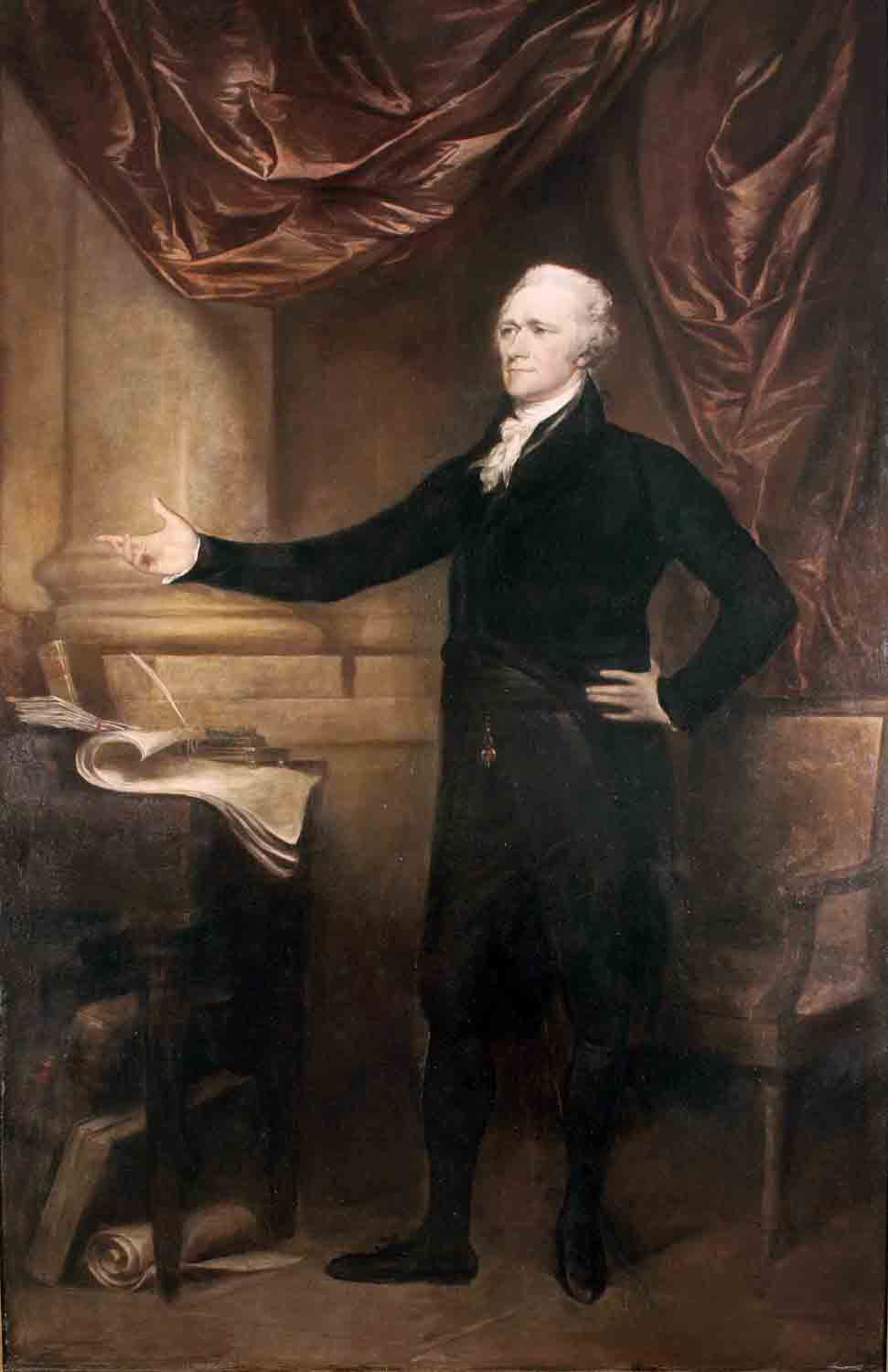|
Federal Reserve Bank Note
Federal Reserve Bank Notes are banknotes that are legal tender in the United States issued between 1915 and 1934, together with United States Notes, Silver Certificates, Gold Certificates, National Bank Notes and Federal Reserve Notes. They were specified in the Federal Reserve Act of 1913 and had the same value as other kinds of notes of similar value. Federal Reserve Bank Notes are different from Federal Reserve Notes in that they are backed by one of the twelve Federal Reserve Banks, rather than by all collectively. Federal Reserve Bank Notes were envisioned as a replacement for National Bank Notes, but that did not prove to be the case. They were backed in a similar way to National Bank Notes, using U.S. bonds, but issued by Federal Reserve banks instead of by chartered National banks. Federal Reserve Bank Notes are no longer issued; the only U.S. banknotes still in production since 1971 are the Federal Reserve Notes. Large size Federal Reserve Bank Notes were first issued in ... [...More Info...] [...Related Items...] OR: [Wikipedia] [Google] [Baidu] |
Banknote
A banknote—also called a bill (North American English), paper money, or simply a note—is a type of negotiable instrument, negotiable promissory note, made by a bank or other licensed authority, payable to the bearer on demand. Banknotes were originally issued by commercial banks, which were legally required to Redemption value, redeem the notes for legal tender (usually gold or silver coin) when presented to the chief cashier of the originating bank. These commercial banknotes only traded at face value in the market served by the issuing bank. Commercial banknotes have primarily been replaced by national banknotes issued by central banks or monetary authority, monetary authorities. National banknotes are often – but not always – legal tender, meaning that courts of law are required to recognize them as satisfactory payment of money debts. Historically, banks sought to ensure that they could always pay customers in coins when they presented banknotes for payment. This p ... [...More Info...] [...Related Items...] OR: [Wikipedia] [Google] [Baidu] |
United States One Hundred-dollar Bill
The United States one-hundred-dollar bill ($100) is a denomination of United States currency. The first United States Note with this value was issued in 1862 and the Federal Reserve Note version was launched in 1914, alongside other denominations. Statesman, inventor, diplomat, and American founding father Benjamin Franklin has been featured on the obverse of the bill since 1914. On the reverse of the banknote is an image of Independence Hall in Philadelphia, which has been used since 1928. The bill is the largest denomination that has been printed and circulated since July 13, 1969, when the larger denominations of , , , and were retired. As of December 2018, the average life of a bill in circulation is 22.9 years before it is replaced due to wear. The bills are also commonly referred to as "Bens", "Benjamins", or "Franklins", in reference to the use of Benjamin Franklin's portrait by the French painter Joseph Duplessis on the denomination, as "C-Notes" or "Century Notes", ... [...More Info...] [...Related Items...] OR: [Wikipedia] [Google] [Baidu] |
Ulysses S
Ulysses is one form of the Roman name for Odysseus, a hero in ancient Greek literature. Ulysses may also refer to: People * Ulysses (given name), including a list of people with this name Places in the United States * Ulysses, Kansas * Ulysses, Kentucky * Ulysses, Nebraska * Ulysses Township, Butler County, Nebraska * Ulysses, New York *Ulysses, Pennsylvania * Ulysses Township, Potter County, Pennsylvania Arts and entertainment Literature * "Ulysses" (poem), by Alfred Lord Tennyson * ''Ulysses'' (play), a 1705 play by Nicholas Rowe * ''Ulysses'', a 1902 play by Stephen Phillips * ''Ulysses'' (novel), by James Joyce * ''HMS Ulysses'' (novel), by Alistair Maclean * Ulysses (comics), two members of a fictional group in the Marvel Comics universe * Ulysses Klaue, a character in Marvel comic books * Ulysses: Jeanne d'Arc and the Alchemist Knight, a light novel Film and television * ''Ulysses'' (1954 film), starring Kirk Douglas based on the story of Homer's ''Odysse ... [...More Info...] [...Related Items...] OR: [Wikipedia] [Google] [Baidu] |
United States Fifty-dollar Bill
The United States fifty-dollar bill ($50) is a Denomination (currency), denomination of United States dollar, United States currency. The 18th President of the United States, U.S. president (1869-1877), Ulysses S. Grant, is featured on the obverse, while the United States Capitol, U.S. Capitol is featured on the Obverse and reverse, reverse. All current-issue $50 bills are Federal Reserve Notes. As of December 2018, the average life of a $50 bill in Circulation (currency), circulation is 12.2 years before it is replaced due to wear. Approximately 3.5% of all notes printed in 2019 were $50 bills. They are delivered by Federal Reserve Banks in beige straps. Next to the United States two-dollar bill, the fifty-dollar bill has the lowest circulation of any U.S. denomination measured by volume, with 1.8 billion notes in circulation as of December 31, 2019. History Large size notes ''( 7.4218 × 3.125 in ≅ 189 × 79 mm)'' *1861: Three-year $50 Interest Bearing Notes were ... [...More Info...] [...Related Items...] OR: [Wikipedia] [Google] [Baidu] |
Grover Cleveland
Stephen Grover Cleveland (March 18, 1837June 24, 1908) was an American lawyer and politician who served as the 22nd and 24th president of the United States from 1885 to 1889 and from 1893 to 1897. Cleveland is the only president in American history to serve two non-consecutive terms in office. He won the popular vote for three presidential elections—in 1884, 1888, and 1892—and was one of two Democrats (followed by Woodrow Wilson in 1912) to be elected president during the era of Republican presidential domination dating from 1861 to 1933. In 1881, Cleveland was elected mayor of Buffalo, and in 1882, he was elected governor of New York. He was the leader of the pro-business Bourbon Democrats who opposed high tariffs, free silver, inflation, imperialism, and subsidies to business, farmers, or veterans. His crusade for political reform and fiscal conservatism made him an icon for American conservatives of the era. Cleveland won praise for his honesty, self-reliance, ... [...More Info...] [...Related Items...] OR: [Wikipedia] [Google] [Baidu] |
United States Twenty-dollar Bill
The United States twenty-dollar bill ($20) is a denomination of U.S. currency. A portrait of Andrew Jackson, the seventh U.S. president (1829–1837), has been featured on the obverse of the bill since 1928; the White House is featured on the reverse. As of December 2018, the average life of a $20 bill in circulation is 7.8 years before it is replaced due to wear. About 11% of all notes printed in 2009 were $20 bills. Twenty-dollar bills are delivered by Federal Reserve Banks in violet straps. History Large-sized notes * The back is printed green. * The back is different, with several small variations extant. * The reverse has a $20 gold coin and various abstract elements. The back is orange. * * The back design is green. * * The back design is black. * The back is orange and features an eagle. * The front is similar, but the back is different and printed in brown. * * Two different backs exist both with abstract designs. * The front features Hugh McCulloch, and t ... [...More Info...] [...Related Items...] OR: [Wikipedia] [Google] [Baidu] |
Andrew Jackson
Andrew Jackson (March 15, 1767 – June 8, 1845) was an American lawyer, planter, general, and statesman who served as the seventh president of the United States from 1829 to 1837. Before being elected to the presidency, he gained fame as a general in the United States Army and served in both houses of the U.S. Congress. Although often praised as an advocate for ordinary Americans and for his work in preserving the union of states, Jackson has also been criticized for his racial policies, particularly his treatment of Native Americans. Jackson was born in the colonial Carolinas before the American Revolutionary War. He became a frontier lawyer and married Rachel Donelson Robards. He served briefly in the United States House of Representatives and the United States Senate, representing Tennessee. After resigning, he served as a justice on the Tennessee Supreme Court from 1798 until 1804. Jackson purchased a property later known as the Hermitage, becoming a wealthy plan ... [...More Info...] [...Related Items...] OR: [Wikipedia] [Google] [Baidu] |
United States Ten-dollar Bill
The United States ten-dollar bill ($10) is a Denomination (currency), denomination of U.S. currency. The obverse of the bill features the portrait of Alexander Hamilton, who served as the first U.S. Secretary of the Treasury. The Obverse and reverse, reverse features the U.S. Treasury Building. All $10 bills issued today are Federal Reserve Notes. As of December 2018, the average life of a $10 bill in Circulation (currency), circulation is 5.3 years before it is replaced due to wear. Ten-dollar bills are delivered by Federal Reserve Banks in yellow straps. The source of the portrait on the $10 bill is John Trumbull's 1805 painting of Hamilton that belongs to the portrait collection of New York City Hall. The $10 bill is unique in that it is the only denomination in circulation in which the portrait faces to the left. It also features one of two non-presidents on currently issued U.S. bills, the other being Benjamin Franklin on the United States one hundred-dollar bill, $100 bill. ... [...More Info...] [...Related Items...] OR: [Wikipedia] [Google] [Baidu] |






